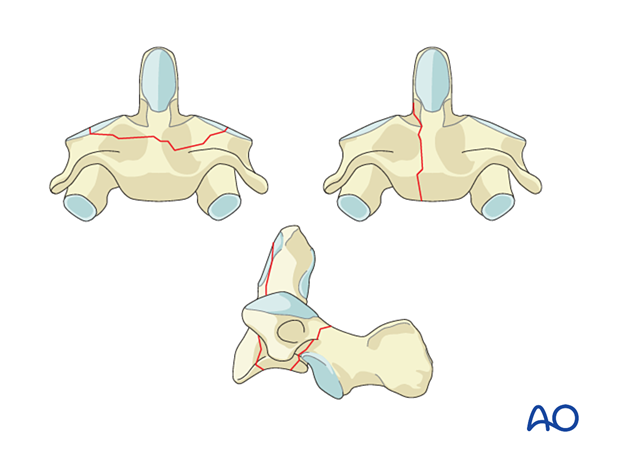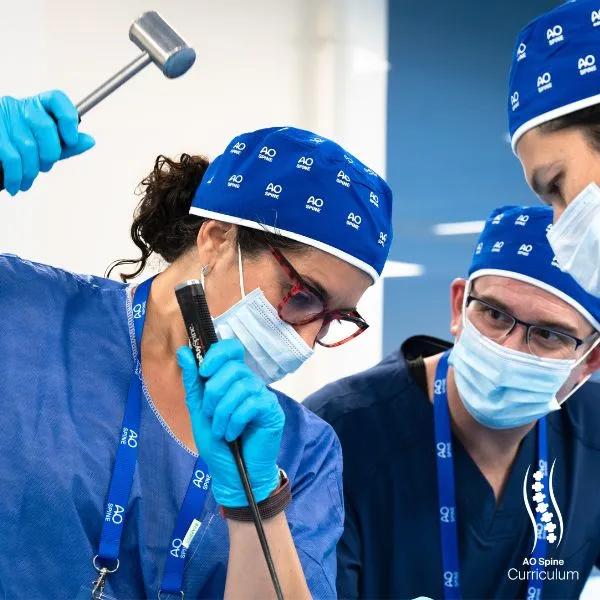Region III: C2 and C2–C3 joint - Type A: Isolated bony injury of C2
Type A injuries are any C2 fractures (simple or multifragmentary) without significant ligamentous or discal injury.
This includes C2 fractures and odontoid fractures. C2 fractures are illustrated here.
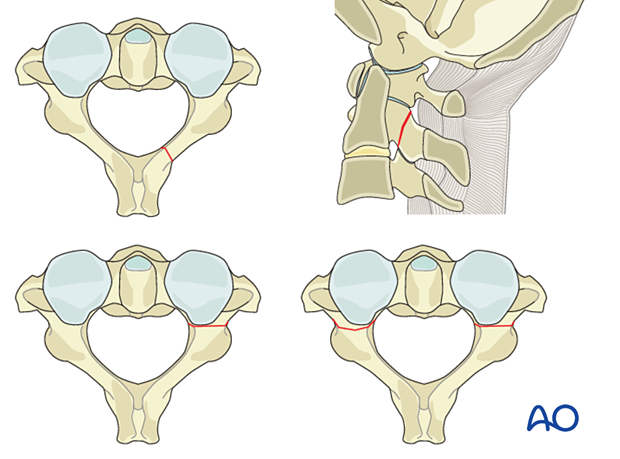
Odontoid fractures are illustrated here.
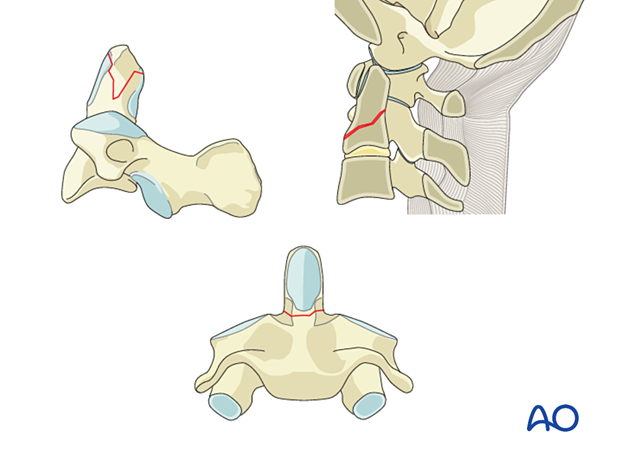
Odontoid fractures
Tip of the dens fractureThe tip of the dens is obliquely fractured on one side. This rare fracture may be due to a shear injury when the tip of the dens comes into contact with the rim of the foramen magnum, however, it can also represent an avulsion fracture of the alar ligament and must therefore be suspected to be part of an atlantooccipital dislocation.
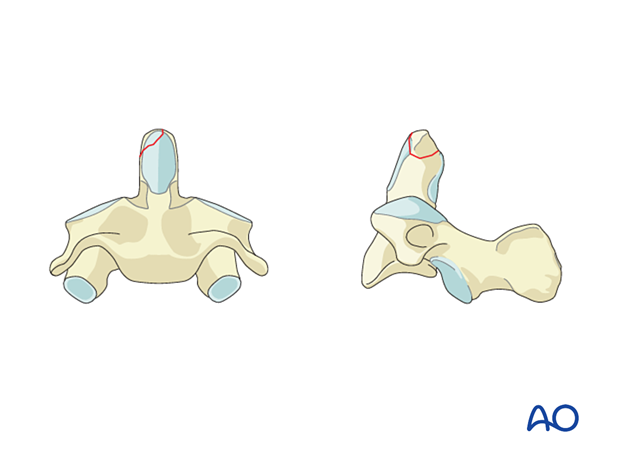
The fracture line is located in the odontoid peg itself, above the vertebral body of C2. The fracture surface is small and the fracture has a high nonunion rate when treated conservatively.
Most often the fracture is transverse but it may also be comminuted or oblique. The fractured odontoid process may be dislocated anteriorly or posteriorly, but the C1–C2 joint is not dislocated.

The fracture line is located in the vertebral body of C2 itself, underneath the odontoid peg. The fracture is in cancellous bone and therefore has a better healing potential with a lower nonunion rate when treated conservatively. The fracture often enters the lateral atlantoaxial joint on one or both sides and may create an intraarticular step. The fracture may also extend into the isthmus.
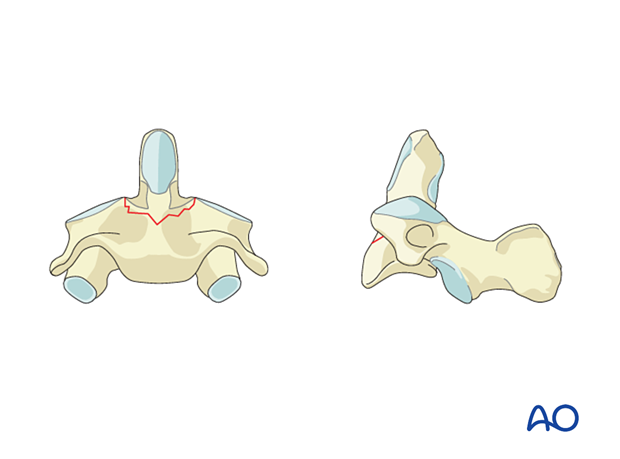
C2 Body fracture
C2 body fractures run either coronally, sagitally, or horizontally through the body.
